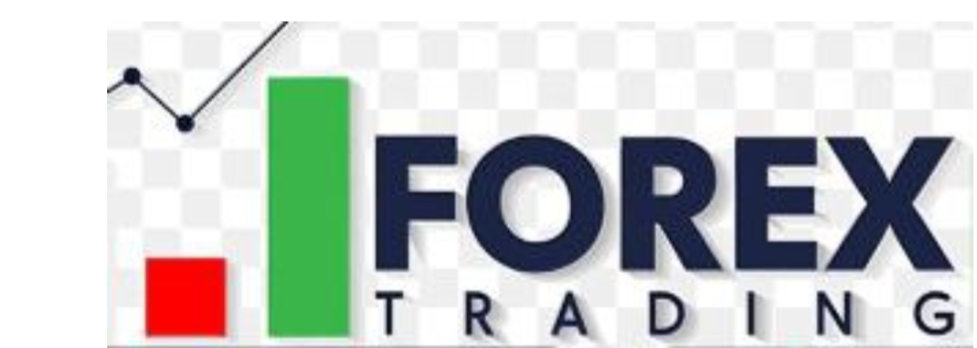Here's a list of 100 forex jargons from common to rare, along with their definitions:
1. Pip: The smallest price movement in a currency pair.
2. Bid/Ask: The price at which traders can sell/buy a currency pair.
3. Spread: The difference between the bid and ask prices.
4. Leverage: The ability to control a large position with a smaller amount of capital.
5. Margin: The amount of funds required to open and maintain a trading position.
6. Lot: Standardized trading size used in forex, typically 100,000 units of the base currency.
7. Long/Short: Buying/Selling a currency pair in anticipation of its rise/fall in value.
8. Stop Loss: An order placed to limit potential losses by closing a position at a predetermined price level.
9. Take Profit: An order placed to lock in profits by closing a position at a predetermined price level.
10. Margin Call: A request from a broker for additional funds to cover potential losses.
11. Hedging: Opening a position to offset the risk of another position.
12. Liquidity: The ease at which an asset can be bought or sold without affecting its price.
13. Volatility: The measure of price fluctuations in a currency pair over a period of time.
14. Base Currency: The first currency listed in a currency pair.
15. Quote Currency: The second currency listed in a currency pair.
16. Major Currency Pairs: The most traded currency pairs in the forex market.
17. Minor Currency Pairs: Currency pairs that do not include the US dollar.
18. Exotic Currency Pairs: Currency pairs involving one major currency and one currency from a developing or small economy.
19. Carry Trade: A trading strategy where an investor borrows money in a low-interest rate currency to invest in a higher yielding currency.
20. Arbitrage: Simultaneously buying and selling the same asset in different markets to profit from price discrepancies.
21. RSI (Relative Strength Index): A momentum oscillator that measures the speed and change of price movements.
22. MACD (Moving Average Convergence Divergence): A trend-following momentum indicator that shows the relationship between two moving averages of a security's price.
23. EMA (Exponential Moving Average): A type of moving average that gives more weight to recent prices.
24. Fibonacci Retracement: A technical analysis tool used to identify potential reversal levels in a market.
25. Candlestick: A type of chart that displays the open, high, low, and closing prices of a security for a specific period.
26. Bear Market: A market characterized by declining prices.
27. Bull Market: A market characterized by rising prices.
28. Whipsaw: A volatile market condition where a security's price abruptly moves in one direction and then quickly reverses course.
29. Drawdown: The peak-to-trough decline during a specific period for an investment.
30. Correlation: The statistical measure of the relationship between two securities or currency pairs.
31. Slippage: The difference between the expected price of a trade and the price at which the trade is executed.
32. Requote: A situation where the broker is unable to execute a trade at the requested price and provides a new quote.
33. GTC (Good 'Til Canceled): An order to buy or sell a security at a specified price that remains active until it is filled or canceled by the investor.
34. Limit Order: An order to buy or sell a security at a specified price or better.
35. Market Order: An order to buy or sell a security at the current market price.
36. Overbought/Oversold: Terms used to describe the condition of an asset that has experienced a significant and unsustainable price movement in one direction.
37. Stop Limit Order: An order to buy or sell a security at a specified price or better, after a given stop price has been reached.
38. Reversal: A change in the direction of a price trend.
39. Breakout: The point at which the price of a security breaks through a support or resistance level, often accompanied by increased volume.
40. Dead Cat Bounce: A temporary recovery in the price of a security or market after a significant decline, followed by a continuation of the downtrend.
41. Gap: A break between prices on a chart that occurs when the price of a security makes a sharp move up or down with no trading occurring in between.
42. Range: The difference between the highest and lowest prices in a given period.
43. Reversal Pattern: A pattern on a price chart that indicates a potential change in the direction of a price trend.
44. Trendline: A line drawn on a price chart that connects two or more price points and is used to identify trends.
45. Triangle: A technical analysis pattern formed by drawing trendlines along a price series that converges at a point.
46. Head and Shoulders: A reversal pattern that indicates a potential change in the direction of a price trend.
47. Descending Triangle: A bearish chart pattern characterized by a series of lower highs and a horizontal support line.
48. Ascending Triangle: A bullish chart pattern characterized by a series of higher lows and a horizontal resistance line.
49. Symmetrical Triangle: A chart pattern formed by two converging trendlines that are roughly equal in slope.
50. Pennant: A continuation pattern formed by converging trendlines that resemble a small symmetrical triangle.
51. Flag: A continuation pattern that resembles a small rectangle drawn against the prevailing trend.
52. Cup and Handle: A bullish continuation pattern that resembles a cup with a handle.
53. Wedge: A chart pattern formed by converging trendlines that slope in the same direction.
54. Rounding Bottom: A chart pattern that indicates a potential reversal of a downtrend.
55. Rounding Top: A chart pattern that indicates a potential reversal of an uptrend.
56. Inverted Head and Shoulders: A reversal pattern that indicates a potential change in the direction of a price trend.
57. Double Top: A bearish reversal pattern that signals the end of an uptrend.
58. Double Bottom: A bullish reversal pattern that signals the end of a downtrend.
59. Triple Top: A bearish reversal pattern that signals the end of an uptrend.
60. Triple Bottom: A bullish reversal pattern that signals the end of a downtrend.
61. Gartley Pattern: A harmonic trading pattern that predicts retracements and reversals.
62. ABCD Pattern: A harmonic trading pattern that predicts price movements based on Fibonacci ratios.
63. Elliot Wave Theory: A technical analysis theory that predicts price movements by identifying recurring patterns.
64. Fibonacci Extension: A tool used in technical analysis to identify potential support and resistance levels based on Fibonacci ratios.
65. Fibonacci Fan: A technical analysis tool used to identify potential support and resistance levels based on Fibonacci ratios.
66. Ichimoku Cloud: A technical analysis tool that provides information about support and resistance levels, as well as trend direction and momentum.
67. Bollinger Bands: A technical analysis tool that measures volatility by plotting two standard deviations above and below a moving average.
68. Stochastic Oscillator: A momentum indicator that compares a security's closing price to its price range over a given period.
69. Parabolic SAR (Stop and Reverse): A technical analysis tool used to identify potential reversals in price trends.
70. ADX (Average Directional Index): A technical analysis indicator used to determine the strength of a trend.
71. Williams %R: A momentum oscillator that measures overbought and oversold levels.
72. Pivot Point: A technical analysis indicator used to identify potential support and resistance levels.
73. Donchian Channel: A technical analysis tool that plots the highest high and lowest low over a specified period.
74. Heikin-Ashi: A type of candlestick chart that averages price data to create a smoother representation of price movements.
75. Renko Chart: A type of chart that only plots price movements and ignores time.
76. Point and Figure Chart: A type of chart that filters out smaller price movements and focuses on significant price changes.
77. Tick Chart: A type of chart that plots price movements based on the number of trades executed.
78. Range Bar Chart: A type of chart that plots price movements based on a specified price range.
79. Volume Profile: A graphical representation of trading activity over a specified period.
80. Market Profile: A graphical representation of trading activity over a specified period, typically displayed as a histogram.
81. Elliot Wave Count: The process of identifying and labeling Elliot Wave patterns on a price chart.
82. Candlestick Patterns: Patterns formed by one or more candlesticks that indicate potential changes in price direction.
83. Falling Wedge: A bullish chart pattern formed by converging trendlines that slope downward.
84. Rising Wedge: A bearish chart pattern formed by converging trendlines that slope upward.
85. Evening Star: A bearish candlestick pattern that indicates a potential reversal of an uptrend.
86. Morning Star: A bullish candlestick pattern that indicates a potential reversal of a downtrend.
87. Three Black Crows: A bearish candlestick pattern that indicates a potential reversal of an uptrend.
88. Three White Soldiers: A bullish candlestick pattern that indicates a potential reversal of a downtrend.
89. Belt Hold Line: A bullish or bearish candlestick pattern that indicates a potential reversal of a trend.
90. Doji: A candlestick pattern with a small body that indicates indecision in the market.
91. Dragonfly Doji: A bullish candlestick pattern with a long lower shadow and no upper shadow.
92. Gravestone Doji: A bearish candlestick pattern with a long upper shadow and no lower shadow.
93. Hammer: A bullish candlestick pattern with a small body and a long lower shadow.
94. Hanging Man: A bearish candlestick pattern with a small body and a long lower shadow.
95. Inverted Hammer: A bullish candlestick pattern with a small body and a long upper shadow.
96. Shooting Star: A bearish candlestick pattern with a small body and a long upper shadow.
97. Tweezer Top: A bearish candlestick pattern formed by two candles with matching highs.
98. Tweezer Bottom: A bullish candlestick pattern formed by two candles with matching lows.
99. Engulfing Pattern: A bullish or bearish candlestick pattern where the second candle completely engulfs the first candle.
100. Dark Cloud Cover: A bearish candlestick pattern formed by a long black candle following a long white candle.
These are some of the most common to rarest forex jargons with their definitions. Keep in mind that the forex market is vast, and there are always new terms and concepts emerging as the market evolves.







No comments:
Post a Comment